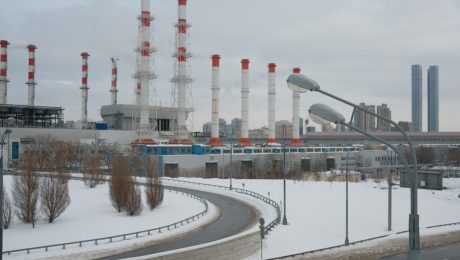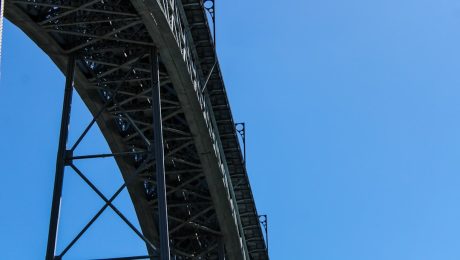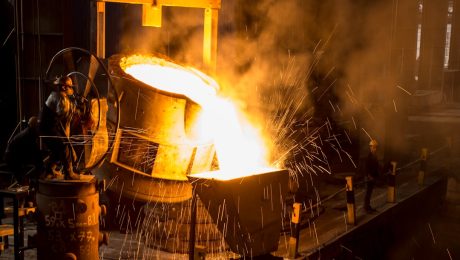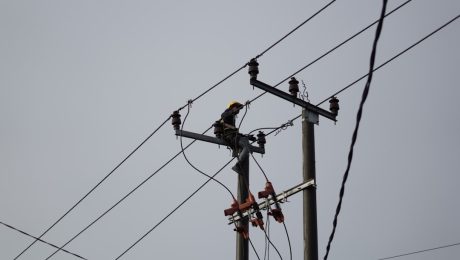body { font-family: sans-serif; line-height: 1.6; }
h1, h2, h3 { color: #333; }
img { max-width: 100%; height: auto; }
Steel is the backbone of modern infrastructure, and its significance in the power generation sector is undeniable. From colossal structures to intricate components, steel’s strength, durability, and versatility make it an indispensable material in power plant integration. This post delves into the multifaceted role of steel in various aspects of power plant construction and operation.
1. Structural Steel: The Foundation of Power Plants
The sheer scale of power plants demands robust structural support, and steel delivers. Massive steel frames form the skeleton of these facilities, supporting boilers, turbines, generators, and ancillary equipment. High-strength steel alloys, like weathering steel (Corten steel), are often preferred for their resistance to corrosion and long lifespan, minimizing maintenance and extending the plant’s operational life. The design and construction of these steel structures require meticulous engineering to ensure stability under various loads and environmental conditions, including seismic activity and extreme weather events. Advanced techniques like Finite Element Analysis (FEA) are employed to optimize designs for maximum strength and efficiency, minimizing material usage while maintaining structural integrity.
2. Steel in Boiler and Turbine Systems: Withstanding Extreme Conditions
Power plant boilers operate under intense pressure and temperature, requiring materials capable of withstanding extreme conditions. High-pressure steam lines, superheater tubes, and boiler drums are often constructed from specialized steel alloys designed for high-temperature creep resistance and corrosion resistance. These alloys often contain elements like chromium, molybdenum, and vanadium to enhance their performance under demanding operating conditions. Similarly, turbine components, including blades, casings, and shafts, are manufactured from high-strength, heat-resistant steels to withstand the high-speed rotation and thermal stresses generated during power generation. The precision manufacturing and rigorous quality control of these steel components are crucial for ensuring the safety and efficiency of the power plant.
3. Steel’s Role in Cooling Towers and Water Treatment
Cooling towers, essential for dissipating waste heat, often incorporate significant amounts of steel in their construction. The structural framework, supporting the fill media and water distribution systems, is typically made from steel, requiring careful consideration of corrosion resistance due to exposure to water and air. Steel is also used in pipelines and tanks involved in water treatment and distribution within the power plant. The selection of appropriate steel grades considers factors such as water chemistry, temperature fluctuations, and the potential for galvanic corrosion. Protective coatings and cathodic protection systems are often implemented to extend the lifespan of steel components in these demanding environments.
4. Steel in Electrical Infrastructure and Switchgear
Power plants house extensive electrical infrastructure, and steel plays a key role in supporting and protecting this critical equipment. Steel structures support transformers, switchgear, and other electrical components, ensuring their stability and preventing damage. Steel enclosures protect sensitive equipment from environmental factors and enhance safety. The design of these steel structures considers electromagnetic compatibility (EMC) to prevent interference with electrical systems. Furthermore, steel is used in the construction of electrical conduits and cable trays, providing safe and organized routing of electrical cables throughout the plant.
5. The Future of Steel in Power Plant Integration: Sustainability and Innovation
The power generation industry is undergoing a significant transformation towards sustainable and renewable energy sources. Steel continues to play a crucial role, but with a growing emphasis on sustainability. Research is focused on developing higher-strength, lighter-weight steels to reduce material consumption and minimize the environmental footprint of power plant construction. The use of recycled steel in power plant projects is also increasing, promoting circular economy principles. Furthermore, advancements in steel manufacturing processes are aimed at reducing carbon emissions associated with steel production. Innovations in steel coatings and surface treatments are improving corrosion resistance, extending the lifespan of steel components, and reducing maintenance costs.
In conclusion, steel’s integral role in power plant integration is undeniable. Its strength, versatility, and durability are critical to the safe and efficient operation of these vital facilities. As the energy sector evolves, the development and application of innovative steel technologies will continue to shape the future of power generation.
SEO Tags:
Power plant steel, steel in power generation, power plant construction materials, steel structures power plants, sustainable steel in energy
Net terms, a cornerstone of business-to-business (B2B) transactions, often seem shrouded in mystery. Understanding these terms is crucial for both buyers and sellers, impacting cash flow, creditworthiness, and overall business success. This comprehensive guide will demystify net terms, providing you with the knowledge to navigate this essential aspect of commerce confidently.
What Exactly are Net Terms?
Net terms, simply put, refer to the payment terms agreed upon between a buyer and a seller for goods or services. They specify the number of days a buyer has to pay an invoice after the invoice date. For example, “Net 30” means the buyer has 30 days from the invoice date to remit payment. This contrasts with immediate payment terms (e.g., cash on delivery or COD) where payment is expected immediately upon receipt of goods or services. Net terms are a common practice, offering buyers a grace period to manage their cash flow and allowing businesses to build stronger relationships based on trust and established credit lines.
Understanding Different Net Term Structures
While “Net 30” is the most common net term, variations exist depending on the relationship between the buyer and seller, industry norms, and the creditworthiness of the buyer. Here are a few examples:
- Net 30: Payment due within 30 days of the invoice date.
- Net 60: Payment due within 60 days of the invoice date.
- Net 90: Payment due within 90 days of the invoice date.
- Net 120: Payment due within 120 days of the invoice date.
Longer net terms (like Net 60 or Net 90) are usually granted to established clients with a strong credit history. Negotiating favorable net terms is a skill that can significantly benefit a business’s cash flow.
The Importance of Creditworthiness in Net Terms
A buyer’s creditworthiness is a critical factor in determining the net terms they can secure. Suppliers assess a buyer’s credit history, financial stability, and payment patterns before extending credit. Factors like credit reports (e.g., Dun & Bradstreet), payment history with other suppliers, and financial statements all contribute to this assessment. A strong credit score significantly increases the likelihood of securing more favorable net terms, such as longer payment periods.
Conversely, a poor credit history may result in stricter payment terms (shorter payment periods, cash on delivery), or even the refusal to extend credit altogether. Maintaining a healthy credit profile is essential for businesses aiming to negotiate advantageous net terms.
Managing Cash Flow with Net Terms: Strategies for Buyers and Sellers
Effective cash flow management is paramount when dealing with net terms. For buyers, understanding the payment cycle is crucial. Planning for upcoming payments and using tools like invoice tracking software can help avoid late payments and maintain a good credit rating. Consider strategies like invoice financing or factoring if cash flow is tight.
For sellers, managing accounts receivable efficiently is key. Implementing robust invoicing and collection processes, monitoring payment patterns, and employing credit risk assessment tools are all vital to minimizing bad debt. Offering early payment discounts can incentivize prompt payment and improve cash flow.
Negotiating and Improving Your Net Terms
Negotiating net terms is a common practice in B2B transactions. Several factors influence the outcome, including your business’s creditworthiness, order volume, and the supplier’s policies. Building strong relationships with suppliers, demonstrating consistent on-time payments, and presenting a strong financial profile can significantly improve your negotiating position. Consider offering early payment discounts to incentivize suppliers to offer better terms. Always review and understand the terms before signing any contracts.
For businesses seeking to improve their net terms, focusing on improving creditworthiness is the most effective strategy. This involves paying invoices on time, maintaining accurate financial records, and actively monitoring your credit reports.
Understanding net terms is not just about knowing the numbers; it’s about building strong business relationships and managing cash flow effectively. By applying the strategies outlined in this guide, both buyers and sellers can optimize their B2B transactions and achieve greater financial success.
Tags: net terms, payment terms, B2B payments, creditworthiness, invoice financing
Steel, a ubiquitous material in modern construction, boasts exceptional strength and versatility. However, ensuring the safety and longevity of steel structures necessitates precise and thorough strength calculations. This post delves into the intricacies of these calculations, providing a comprehensive guide for engineers and anyone interested in understanding the science behind steel structure design.
1. Understanding Load Types and their Impact on Steel Structures
Accurate strength calculations begin with a comprehensive understanding of the loads a steel structure will endure. Loads are broadly categorized into:
- Dead Loads: These are permanent loads, including the weight of the structure itself (steel members, concrete slabs, etc.), fixed equipment, and other non-removable components. Accurate estimation of dead loads is crucial for initial design.
- Live Loads: These are variable loads that change over time. Examples include occupancy loads (people, furniture), snow loads, wind loads, and traffic loads. Design codes provide guidelines for determining appropriate live load values based on the structure’s intended use and location.
- Environmental Loads: These include wind loads, snow loads, seismic loads (earthquakes), and temperature effects. These loads can significantly impact the structural integrity of a steel building, requiring careful consideration in the design process. Specialized software and design codes are often employed to accurately assess environmental loads.
- Impact Loads: These are sudden, dynamic loads that can cause significant stress concentrations. Examples include impacts from vehicles or machinery. Impact loads are often considered as a factor multiplying the static live load.
The combination of these loads, along with their respective load factors (safety factors to account for uncertainties), determines the ultimate load that the steel structure must withstand.
2. Material Properties and their Influence on Steel Strength
The strength of a steel structure is intrinsically linked to the mechanical properties of the steel used. Key properties include:
- Yield Strength (fy): This is the stress at which the steel begins to deform plastically. It’s a crucial parameter in determining the structural capacity of steel members.
- Ultimate Tensile Strength (fu): This represents the maximum stress the steel can withstand before failure. While important, yield strength is typically the governing factor in design.
- Young’s Modulus (E): This is a measure of the steel’s stiffness or resistance to deformation under elastic loading. It’s used in calculations involving stress and strain.
- Poisson’s Ratio (ν): This represents the ratio of lateral strain to axial strain. It’s used in more complex analyses involving three-dimensional stress states.
Material properties are obtained from material test reports or from standard specifications for the steel grade being used. These properties are essential inputs in various strength calculation methods.
3. Navigating Design Codes and Standards
Steel structure design adheres to specific design codes and standards that ensure safety and consistency. These codes provide guidelines for load calculations, material selection, member design, and connection design. Examples include:
- AISC (American Institute of Steel Construction): The AISC publishes the widely used “Steel Construction Manual,” which provides detailed design procedures for steel structures in North America.
- Eurocodes (EN): These are a set of harmonized European standards for structural design, including steel structures. Eurocode 3 specifically addresses the design of steel structures.
- AS/NZS (Australia/New Zealand Standards): These standards provide guidelines for steel structure design in Australia and New Zealand.
Understanding and applying the relevant design codes are crucial for ensuring the structural integrity and compliance of a steel structure. These codes often include safety factors and limit states to account for uncertainties and potential failures.
4. Common Calculation Methods for Steel Member Strength
Several methods are employed to calculate the strength of steel members, depending on the type of member and loading conditions. These include:
- Simple Bending: For beams subjected to bending moments, the flexural strength is calculated using formulas based on the section modulus and yield strength of the steel.
- Axial Compression: Columns subjected to axial compressive loads are analyzed using methods that account for buckling, which is the sudden lateral instability of a slender column. The Euler buckling formula is a fundamental tool in column design.
- Shear: Shear stresses are calculated for members subjected to shear forces. The shear strength is determined based on the shear area and the yield strength of the steel.
- Torsion: Members subjected to torsional moments require calculations to determine the torsional strength, which depends on the shape of the cross-section and the material properties.
- Combined Loading: In reality, steel members often experience combined loading (bending, shear, axial, torsion). Advanced methods, often involving finite element analysis (FEA), are used to analyze these complex loading conditions.
Software tools and hand calculations are commonly used to perform these calculations, ensuring adherence to design codes and safety standards.
5. Advanced Techniques and Software for Steel Structure Analysis
While hand calculations are useful for simpler structures, complex steel structures often require advanced analysis techniques and software tools. These tools allow for more accurate modeling of complex geometries, loading conditions, and material behavior. Some common tools include:
- Finite Element Analysis (FEA): FEA software discretizes the structure into smaller elements and solves the governing equations to determine stresses, strains, and displacements.
- Computer-Aided Design (CAD) Software with Structural Analysis Capabilities: Integrated CAD/FEA software streamlines the design process by allowing for simultaneous design and analysis.
- Specialized Steel Design Software: These software packages are specifically designed for steel structure design, incorporating design codes and providing automated design checks.
These advanced techniques allow for more efficient and accurate design, optimizing the use of materials and ensuring the safety of the structure.
In conclusion, accurate strength calculations are paramount in ensuring the safety and reliability of steel structures. Understanding load types, material properties, design codes, and appropriate calculation methods is critical for successful structural engineering. The use of advanced analysis tools further enhances the precision and efficiency of the design process.
Tags: steel structure, strength calculation, structural analysis, steel design, load calculation
The steel industry is a dynamic landscape, constantly fluctuating with market forces and global events. Securing a reliable steel supply is crucial for any business, and the choice between spot and long-term contracts significantly impacts profitability and operational stability. This in-depth analysis will dissect the advantages and disadvantages of each approach, helping you make an informed decision for your specific needs.
Understanding Spot Steel Contracts: Riding the Price Waves
Spot contracts involve purchasing steel on the open market at the prevailing market price. This approach offers flexibility and responsiveness to immediate needs. You buy steel only when you need it, avoiding the commitment of long-term agreements. The price you pay reflects the current market conditions, which can be advantageous during periods of price decline. However, this flexibility comes with inherent risks.
Advantages of Spot Contracts:
- Flexibility: Buy only what you need, when you need it.
- Potential for Price Savings: Beneficial during market downturns.
- Reduced Inventory Costs: No need to store large quantities of steel.
Disadvantages of Spot Contracts:
- Price Volatility: Exposure to market price fluctuations can significantly impact profitability.
- Supply Uncertainty: No guaranteed supply; availability depends on market conditions.
- Increased Transaction Costs: Frequent purchasing involves higher administrative overhead.
Long-Term Steel Contracts: Securing Stability and Predictability
Long-term steel contracts offer a different approach. These agreements lock in a predetermined price and quantity of steel over a specified period, typically ranging from several months to several years. This provides price stability and secures a reliable supply, reducing the risk of price spikes and supply disruptions.
Advantages of Long-Term Contracts:
- Price Stability: Predictable pricing reduces financial uncertainty.
- Guaranteed Supply: Secures a consistent supply of steel, minimizing production disruptions.
- Improved Cash Flow Management: Facilitates better budgeting and financial planning.
- Stronger Supplier Relationships: Cultivates closer relationships with steel suppliers.
Disadvantages of Long-Term Contracts:
- Price Risk in a Falling Market: You may pay more than the prevailing market price if prices decline.
- Lack of Flexibility: Difficult to adjust quantities or specifications during the contract period.
- Potential for Increased Inventory: May require holding larger steel inventories.
- Contract Negotiation Complexity: Requires careful negotiation and legal review.
Hedging Strategies: Mitigating Risk in Both Contract Types
Regardless of whether you choose spot or long-term contracts, hedging strategies can help mitigate price risk. These strategies involve using financial instruments, such as futures contracts or options, to offset potential losses from price fluctuations. For example, a company using spot contracts might hedge against price increases by purchasing futures contracts, locking in a future price for their steel needs.
Analyzing Your Business Needs: The Key Decision Factor
The optimal choice between spot and long-term steel contracts depends heavily on your specific business needs and risk tolerance. Consider the following factors:
- Production Volume and Consistency: High and consistent production volumes often favor long-term contracts.
- Inventory Management Capabilities: Efficient inventory management can offset the risks of long-term contracts.
- Risk Tolerance: Companies with a higher risk tolerance might prefer spot contracts for potential price savings.
- Market Outlook: An anticipated price increase might make long-term contracts more attractive.
- Financial Resources: Long-term contracts often require significant upfront capital commitment.
Navigating the Steel Market: Expert Advice and Due Diligence
The steel market is complex and influenced by various factors, including global economic conditions, raw material prices, and geopolitical events. Before making a decision, consult with experienced steel procurement professionals and conduct thorough market research. Understanding current market trends and anticipating future price movements is crucial for successful steel procurement. Remember to thoroughly review and understand the terms and conditions of any contract before signing.
Ultimately, the best approach to steel procurement is a strategic one that aligns with your company’s specific needs and risk profile. By carefully weighing the advantages and disadvantages of spot and long-term contracts, and by implementing effective hedging strategies, you can secure a reliable steel supply while optimizing your profitability.
The steel industry, a cornerstone of global infrastructure and manufacturing, presents both immense opportunities and significant challenges for new entrants. Successfully navigating this complex landscape requires a well-defined market entry strategy. This comprehensive guide explores various approaches, considerations, and potential pitfalls to help you forge a path to success in this competitive sector.
1. Understanding the Steel Market Landscape: A Crucial First Step
Before diving into specific strategies, a thorough understanding of the steel market is paramount. This involves analyzing several key aspects:
- Market Size and Growth Potential: Research the overall size of the target market, its growth trajectory, and regional variations. Consider factors like infrastructure development, industrialization, and construction activity.
- Competitive Analysis: Identify key players, their market share, strengths, weaknesses, and competitive strategies. Analyze their product portfolios, pricing strategies, and distribution networks.
- Regulatory Landscape: Understand relevant regulations, trade policies, environmental standards, and safety regulations that govern the steel industry in your target market. Compliance is crucial for long-term success.
- Demand and Supply Dynamics: Analyze the current demand and supply of steel in the target market. Identify any potential supply shortages or surpluses that might influence pricing and market dynamics.
- Technological Advancements: Stay abreast of technological innovations in steel production, such as advanced manufacturing techniques, automation, and sustainable steelmaking processes. These advancements can significantly impact competitiveness.
2. Choosing the Right Market Entry Mode: Exporting vs. FDI
The choice between exporting and Foreign Direct Investment (FDI) significantly impacts your market entry strategy. Each approach has its own set of advantages and disadvantages:
- Exporting: This involves selling steel products from your existing production facilities to the target market. It’s a lower-risk, lower-investment approach, ideal for testing the market and building brand awareness. However, it might involve higher transportation costs and tariffs.
- Foreign Direct Investment (FDI): This involves setting up a production facility or acquiring an existing steel company in the target market. FDI offers greater control over production, distribution, and marketing, but it requires a significantly higher capital investment and carries greater risk.
- Joint Ventures & Strategic Alliances: A middle ground approach where you partner with a local company, sharing resources, expertise, and risk. This offers access to local knowledge and networks while mitigating some of the risks associated with FDI.
3. Navigating the Challenges: Regulatory Hurdles and Infrastructure Needs
Entering the steel sector presents numerous challenges. Understanding and mitigating these risks is crucial for success:
- Regulatory Compliance: Meeting stringent environmental, safety, and labor regulations can be complex and costly. Thorough due diligence and compliance strategies are essential.
- Infrastructure Requirements: Establishing a steel production facility requires significant infrastructure investment, including access to raw materials, transportation networks, and energy sources.
- Supply Chain Management: Securing a reliable supply of raw materials like iron ore and coal is vital. Efficient logistics and supply chain management are crucial for cost-effectiveness.
- Labor Relations: Building positive relationships with labor unions and ensuring fair labor practices are essential for maintaining a stable workforce and avoiding disruptions.
- Geopolitical Risks: Political instability, trade wars, and protectionist policies can significantly impact market access and investment returns.
4. Building a Strong Brand and Distribution Network
Once you’ve established your presence, building a strong brand and effective distribution network is crucial for capturing market share:
- Branding and Marketing: Develop a strong brand identity that resonates with your target customers. Effective marketing strategies are needed to build brand awareness and loyalty.
- Distribution Channels: Establish efficient distribution channels to reach your customers effectively. This might involve direct sales, distributors, wholesalers, or a combination of approaches.
- Customer Relationship Management (CRM): Implement a CRM system to manage customer interactions, track sales, and build long-term relationships.
- After-Sales Service: Providing excellent after-sales service builds customer trust and loyalty, enhancing your competitive advantage.
5. Financial Planning and Risk Management: Securing Success
Entering the steel sector requires careful financial planning and robust risk management strategies:
- Capital Investment: Accurately estimate the capital investment required for your chosen market entry mode, including production facilities, equipment, and working capital.
- Funding Sources: Secure appropriate funding sources, such as loans, equity investments, or government grants.
- Financial Projections: Develop realistic financial projections, considering various market scenarios and potential risks.
- Risk Assessment and Mitigation: Identify potential risks, such as price fluctuations, regulatory changes, and geopolitical instability, and develop strategies to mitigate these risks.
- Contingency Planning: Develop contingency plans to address unforeseen circumstances and ensure business continuity.
Entering the steel sector requires meticulous planning, a deep understanding of the market, and a robust strategy. By carefully considering the aspects outlined above, you can significantly increase your chances of success in this challenging yet rewarding industry.
SEO Tags: Steel market entry, steel industry strategy, FDI in steel, exporting steel, steel market analysis
Pipe bending and straightening are crucial processes in various industries, from construction and manufacturing to plumbing and oil and gas. Achieving the desired shape and ensuring the integrity of the pipe requires understanding the available methods and selecting the appropriate tools and techniques. This comprehensive guide will delve into the intricacies of pipe bending and straightening, providing you with the knowledge to tackle your projects with confidence.
1. Understanding Pipe Bending Techniques
Several methods exist for bending pipes, each suited to different pipe materials, diameters, and desired bend radii. The choice depends on factors like material strength, required precision, and the available resources. Common techniques include:
- Manual Bending: This involves using hand tools like pipe benders, which are suitable for smaller diameter pipes and simpler bends. This method is often chosen for its simplicity and low cost, but it can be labor-intensive and less precise for complex bends.
- Hydraulic Bending: Hydraulic pipe benders utilize hydraulic pressure to bend pipes, offering greater control and precision, especially for larger diameter pipes and tighter bends. This method is faster and more efficient than manual bending but requires specialized equipment.
- Rotary Draw Bending: This technique uses a rotating die to pull the pipe through a bending die, producing consistent and accurate bends. It’s ideal for high-volume production and complex bends but requires significant investment in equipment.
- Roll Bending: Roll benders use three rollers to progressively bend the pipe. This method is suitable for large diameter pipes and long radius bends, often used in structural applications.
Choosing the right bending technique is critical for avoiding pipe damage and ensuring the structural integrity of the finished product. Factors such as material type (steel, copper, aluminum), wall thickness, and the desired bend radius must be carefully considered.
2. Essential Tools and Equipment for Pipe Bending
The tools required for pipe bending vary considerably depending on the chosen method. For manual bending, you’ll need pipe benders appropriate for the pipe diameter and material. These can range from simple hand-held tools to more sophisticated lever-action benders. Hydraulic bending necessitates a hydraulic pipe bender, which comes in various sizes and capacities. Rotary draw bending and roll bending require specialized and often expensive machinery.
Beyond the primary bending equipment, you’ll likely need supporting tools such as:
- Pipe measuring tools: Accurate measurements are crucial for precise bending.
- Marking tools: To precisely mark the bending points on the pipe.
- Pipe supports: To hold the pipe securely during the bending process.
- Safety equipment: Gloves, eye protection, and potentially hearing protection are essential for safety.
Investing in high-quality tools is essential for achieving accurate and efficient results. Poor quality tools can lead to inaccurate bends, pipe damage, and even injury.
3. Addressing Pipe Straightening Needs
Pipes can become bent or misaligned during transportation, installation, or due to external forces. Straightening bent pipes is often necessary to maintain structural integrity and ensure proper functionality. Methods for straightening pipes include:
- Manual Straightening: For minor bends, manual straightening using hammers and wooden blocks can be effective. This method requires skill and care to avoid damaging the pipe.
- Hydraulic Straightening: Hydraulic presses are used for straightening severely bent pipes. This method is more precise and efficient than manual straightening but requires specialized equipment.
- Three-Roll Straightening: Similar to roll bending, three-roll straightening machines use rollers to progressively straighten the pipe. This method is suitable for larger diameter pipes and is commonly used in industrial settings.
The choice of straightening method depends on the severity of the bend, the pipe material, and the available resources. It’s crucial to carefully assess the condition of the pipe before attempting to straighten it, as severely damaged pipes may be beyond repair.
4. Safety Precautions During Pipe Bending and Straightening
Pipe bending and straightening can be hazardous if proper safety precautions aren’t followed. Always prioritize safety by:
- Wearing appropriate personal protective equipment (PPE): This includes safety glasses, gloves, and hearing protection.
- Ensuring proper machine operation: Follow the manufacturer’s instructions carefully and never operate equipment beyond its capacity.
- Using proper lifting techniques: Heavy pipes require proper lifting techniques to avoid injuries.
- Maintaining a clean and organized workspace: A cluttered workspace increases the risk of accidents.
- Regularly inspecting equipment: Check for any damage or wear and tear before operating any equipment.
Safety should be the top priority in any pipe bending or straightening operation. A thorough understanding of safety procedures is crucial to prevent accidents and injuries.
5. Choosing the Right Pipe Bending and Straightening Solutions for Your Project
Selecting the appropriate pipe bending and straightening solutions depends on several factors: the pipe material, diameter, wall thickness, desired bend radius, volume of work, and budget. For small-scale projects with simple bends, manual methods may suffice. However, for large-scale projects, complex bends, or high-precision requirements, specialized equipment and techniques are necessary.
Consider consulting with experienced professionals to determine the best approach for your specific project. They can help you assess your needs and recommend the most efficient and cost-effective solutions. Proper planning and selection of tools and techniques are essential for achieving successful and safe results.
By understanding the various methods, tools, and safety considerations, you can confidently tackle your pipe bending and straightening projects. Remember to always prioritize safety and choose the most appropriate techniques for your specific needs.
Tags: pipe bending, pipe straightening, hydraulic bending, manual bending, pipe bending tools, pipe straightening techniques, industrial pipe bending
In today’s competitive landscape, operational efficiency isn’t just a desirable trait – it’s a necessity for survival and growth. A streamlined, efficient operation translates directly to increased profitability, reduced costs, and improved customer satisfaction. This comprehensive guide will explore key strategies to help you achieve operational excellence.
1. Streamlining Processes: Identifying and Eliminating Bottlenecks
The first step towards improving operational efficiency is identifying and eliminating bottlenecks in your processes. Bottlenecks are points in your workflow where tasks slow down or stall, hindering overall productivity. This often involves a careful analysis of your current processes. Consider using process mapping tools to visually represent your workflows. This allows you to pinpoint areas of inefficiency, such as redundant steps, unnecessary approvals, or inadequate resource allocation. Once identified, you can implement solutions such as automation, process re-engineering, or improved communication to alleviate these bottlenecks. For example, if your order fulfillment process is hampered by slow shipping, consider partnering with a faster shipping provider or optimizing your warehouse layout.
2. Optimizing Workflows: Leveraging Technology and Automation
Once bottlenecks are addressed, focus on optimizing your workflows. This involves leveraging technology and automation to streamline tasks and reduce manual effort. Consider implementing project management software to track progress, assign tasks, and facilitate collaboration. Automation tools can automate repetitive tasks such as data entry, invoice processing, and email responses, freeing up valuable employee time for more strategic initiatives. Investing in appropriate technology, such as CRM systems or ERP software, can significantly enhance efficiency by integrating different departments and providing a centralized view of operations. Regularly evaluate your technology to ensure it remains effective and relevant, upgrading or replacing systems when necessary.
3. Empowering Your Employees: Fostering a Culture of Efficiency
Operational efficiency isn’t solely about technology and processes; it’s also about people. Empowering your employees is crucial for achieving sustainable improvements. Invest in training and development programs to equip your team with the necessary skills and knowledge to perform their tasks efficiently. Encourage open communication and feedback to identify areas for improvement and foster a culture of continuous improvement. Delegate effectively, trust your team’s abilities, and provide them with the autonomy they need to take ownership of their work. A motivated and skilled workforce is a key driver of operational excellence.
4. Data-Driven Decision Making: Utilizing Analytics for Continuous Improvement
Data is the lifeblood of operational efficiency. By tracking key performance indicators (KPIs), you can gain valuable insights into your operations and identify areas for improvement. Utilize data analytics tools to monitor performance, identify trends, and make data-driven decisions. This could involve tracking metrics such as order fulfillment time, customer satisfaction scores, employee productivity, and inventory turnover. By analyzing this data, you can identify inefficiencies, predict potential problems, and proactively implement solutions. Regularly review your KPIs and adjust your strategies as needed to maintain optimal performance.
5. Continuous Improvement: Embracing Lean Principles and Kaizen
Operational efficiency is not a destination, but a journey. Embrace a culture of continuous improvement by implementing lean principles and Kaizen methodologies. Lean principles focus on eliminating waste in all forms, including time, materials, and effort. Kaizen, meaning “continuous improvement” in Japanese, emphasizes small, incremental changes that accumulate to significant improvements over time. Regularly review your processes, identify areas for improvement, and implement small, manageable changes. Encourage your team to participate in this process and share their ideas for improvement. By fostering a culture of continuous improvement, you can ensure your operations remain efficient and competitive in the long term.
By implementing these strategies, you can significantly improve your operational efficiency, leading to increased profitability, reduced costs, and improved customer satisfaction. Remember that operational efficiency is an ongoing process that requires consistent effort and adaptation.
SEO Tags:
Operational Efficiency, Improve Efficiency, Business Efficiency, Streamline Processes, Productivity Improvement
body {
font-family: sans-serif;
line-height: 1.6;
}
h1, h2 {
color: #333;
}
img {
max-width: 100%;
height: auto;
display: block;
margin: 20px auto;
}
From the perfectly symmetrical circle to the majestic sphere, the concept of “round” permeates our world, influencing everything from the natural world to human-made creations. This exploration delves into the multifaceted nature of roundness, examining its mathematical properties, cultural significance, and diverse applications.
The Mathematics of Roundness: Circles and Spheres
At its core, “round” is defined by geometric shapes: the circle and the sphere. A circle is a two-dimensional shape defined as the set of all points equidistant from a central point (the radius). Key properties include its circumference (the distance around the circle), its area (the space enclosed within the circle), and its diameter (twice the radius). The relationship between these properties is governed by the constant π (pi), approximately 3.14159, a fundamental number in mathematics.
Extending into three dimensions, we encounter the sphere, a perfectly symmetrical three-dimensional shape. Similar to the circle, a sphere is defined by all points equidistant from a central point. Its properties include its surface area and its volume, both also related to π and the radius. The sphere’s perfect symmetry makes it a fascinating object of study in various fields, from physics to engineering.
Roundness in Nature: From Planetary Orbits to Cellular Structures
The natural world abounds with examples of roundness. Planetary orbits, while not perfectly circular, are often approximated as ellipses, a slightly elongated circle. The spherical shape of planets and stars is a consequence of gravity, which pulls matter equally in all directions. Even at the microscopic level, roundness plays a significant role. Many cells are spherical, optimizing their surface area to volume ratio for efficient nutrient exchange. The roundness of raindrops is a result of surface tension minimizing their surface area.
Furthermore, many natural phenomena exhibit circular or spiral patterns, such as the arrangement of leaves on a stem (phyllotaxis), the spiral arms of galaxies, and the swirling patterns of cyclones. These patterns often reflect underlying mathematical principles and optimal growth strategies in nature.
The Symbolism of Roundness: Perfection and Infinity
Throughout history and across cultures, the round shape has held profound symbolic meaning. The circle often represents wholeness, completeness, and perfection. Its lack of beginning or end symbolizes infinity, eternity, and the cyclical nature of life, death, and rebirth. Many cultures associate the circle with the sun, the moon, and celestial bodies, further reinforcing its connection to cosmic cycles and divine power.
The mandala, a complex geometric design often featuring circles and other round shapes, is a powerful symbol in various spiritual traditions, representing the universe and the individual’s journey towards enlightenment. The widespread use of round shapes in religious iconography and art highlights the enduring significance of roundness as a symbol of spiritual and cosmic unity.
Roundness in Design and Technology: From Wheels to Lenses
The practical applications of roundness are ubiquitous in human-made objects. The wheel, arguably the most significant invention in human history, relies on the circular shape to facilitate movement and transportation. From simple cartwheels to complex gears and turbines, the circle’s properties of smooth rolling and rotation are fundamental to many engineering designs.
In optics, lenses utilize spherical or parabolic surfaces to focus light, forming the basis of telescopes, microscopes, and cameras. The precision engineering required to create perfectly spherical lenses underscores the importance of roundness in advanced technologies. Even seemingly simple objects, such as buttons, coins, and plates, benefit from the round shape for ease of use and aesthetic appeal.
Beyond the Circle and Sphere: Exploring Variations of Roundness
While circles and spheres represent the purest forms of roundness, variations exist. Ellipses, ovals, and other curved shapes exhibit aspects of roundness, although they lack the perfect symmetry of circles and spheres. These variations often arise from natural processes or design considerations. For example, the elliptical orbits of planets result from gravitational interactions, while the oval shape of many eggs is a consequence of biological factors.
The concept of roundness extends beyond simple geometric shapes. We often describe objects as “round” even if they are not perfectly circular or spherical. This subjective use of the term highlights the intuitive and perceptual nature of roundness, emphasizing its role in our understanding of shapes and forms.
In conclusion, the concept of “round” is far richer and more complex than it might initially appear. Its mathematical properties, natural occurrences, symbolic meanings, and technological applications demonstrate its pervasive influence on our world. From the smallest cell to the largest galaxy, the round shape continues to fascinate and inspire, reflecting both the order and beauty inherent in the universe.
Tags: round, circle, sphere, geometry, mathematics, symbolism
In today’s interconnected digital world, Application Programming Interfaces (APIs) are the silent workhorses powering countless applications and services. From checking the weather on your phone to making online purchases, APIs are the unseen connections that make it all possible. This comprehensive guide will demystify APIs, exploring their functionality, types, benefits, and real-world applications.
What Exactly is an API?
At its core, an API is a set of rules and specifications that software programs can follow to communicate with each other. Imagine it as a waiter in a restaurant. You (the application) place your order (request) with the waiter. The waiter (API) takes your order to the kitchen (database or other service), retrieves your meal (data), and brings it back to you. The API acts as an intermediary, translating your requests into a format the receiving system understands and then translating the response back into a format your application can understand. This communication typically involves sending and receiving data in structured formats like JSON or XML.
Types of APIs: A Diverse Landscape
While the fundamental concept remains the same, APIs come in various flavors, each designed for specific purposes and communication styles. Two of the most prominent types are:
- REST (Representational State Transfer) APIs: These are the most common type of API, utilizing standard HTTP methods (GET, POST, PUT, DELETE) to interact with resources. They are stateless, meaning each request contains all the necessary information, making them highly scalable and reliable. REST APIs are often used for web services and mobile applications.
- GraphQL APIs: GraphQL offers a more flexible approach compared to REST. Instead of fetching data from multiple endpoints, a GraphQL API allows you to request precisely the data you need in a single request. This reduces over-fetching and under-fetching, improving efficiency and performance. GraphQL is particularly useful for complex applications requiring granular data control.
- SOAP (Simple Object Access Protocol) APIs: SOAP APIs are older but still used in enterprise environments. They are more complex than REST APIs, relying on XML for data exchange and often using WS-Security for enhanced security. SOAP APIs are known for their robustness and extensive features, but their complexity can make them less efficient than REST for simpler applications.
The Benefits of Utilizing APIs
Integrating APIs into your applications and workflows brings a multitude of advantages:
- Enhanced Functionality: APIs allow you to leverage the capabilities of external services without building everything from scratch. Need payment processing? Integrate a payment gateway API. Need map data? Use a mapping API. This speeds up development and reduces costs.
- Improved Efficiency: Automating tasks through API integration streamlines workflows and boosts productivity. Data can be exchanged seamlessly between systems, eliminating manual data entry and reducing errors.
- Increased Scalability: APIs facilitate the creation of scalable applications. As your user base grows, APIs can handle increased traffic and data loads more effectively than monolithic applications.
- Innovation and Agility: APIs foster innovation by allowing developers to easily integrate new services and features into their applications. This agility helps businesses adapt quickly to changing market demands.
- Data Sharing and Collaboration: APIs enable secure data sharing between different systems and organizations, fostering collaboration and creating new opportunities.
Real-World API Examples: Seeing APIs in Action
APIs are everywhere! Here are a few examples illustrating their pervasive use:
- Social Media Logins: When you log into a website using your Facebook or Google account, you’re using an API. The website interacts with the social media platform’s API to authenticate your identity.
- Weather Applications: Weather apps use APIs from meteorological services to retrieve real-time weather data and display it to users.
- E-commerce Platforms: Online stores rely on APIs to connect with payment gateways, shipping providers, and inventory management systems.
- Mapping Services: Mapping applications like Google Maps use APIs to provide directions, display satellite imagery, and show points of interest.
- Ride-Sharing Apps: Ride-sharing services utilize APIs to connect drivers and passengers, manage bookings, and process payments.
API Security: Protecting Your Data and Systems
API security is paramount. Given that APIs are gateways to your data and systems, protecting them from unauthorized access and malicious attacks is crucial. Effective API security strategies include:
- Authentication and Authorization: Implement robust mechanisms to verify the identity of users and applications accessing your APIs and ensure they only have access to authorized resources.
- Input Validation: Thoroughly validate all inputs to prevent injection attacks, such as SQL injection or cross-site scripting (XSS).
- Rate Limiting: Implement rate limiting to prevent denial-of-service (DoS) attacks by restricting the number of requests an application can make within a given time period.
- API Key Management: Use API keys to identify and authenticate applications, and regularly rotate keys to enhance security.
- Monitoring and Logging: Monitor API traffic and log all activities to detect suspicious behavior and quickly respond to security incidents.
APIs are fundamental to modern software development and the interconnectedness of the digital world. Understanding their functionality, types, benefits, and security considerations is essential for anyone involved in software development, system integration, or digital strategy.
Tags: API, REST API, GraphQL API, API Integration, API Security
body { font-family: sans-serif; line-height: 1.6; }
h1, h2, h3 { color: #333; }
img { max-width: 100%; height: auto; }
Twisted square wire, often overlooked, possesses a surprising versatility that extends far beyond its simple appearance. Its unique properties – strength, flexibility, and aesthetic appeal – make it a valuable material in a wide range of applications. This comprehensive guide will explore the diverse uses of twisted square wire, from intricate crafts to robust construction projects.
Crafting with Twisted Square Wire: Unleashing Creativity
The unique texture and visual appeal of twisted square wire make it a favorite among crafters. Its strength allows for the creation of durable and long-lasting pieces. Here are some popular crafting applications:
- Jewelry Making: Twisted square wire is ideal for creating necklaces, bracelets, and earrings. Its square shape adds a modern and edgy look, and its strength ensures the jewelry can withstand daily wear.
- Wire Wrapping: The wire’s strength and flexibility make it perfect for wrapping around beads, stones, and other components to create unique pendants and charms.
- Sculpting and Wirework: More experienced crafters can use twisted square wire to create intricate sculptures and wirework art. The square shape allows for interesting textural effects and unique designs.
- Basket Weaving: Twisted square wire can be used in basket weaving, offering a modern twist on traditional techniques. Its strength ensures the basket maintains its shape and durability.
Remember to choose the appropriate gauge of wire depending on the project’s requirements. Thinner gauges are suitable for delicate jewelry, while thicker gauges are better for more robust projects.
Construction and Industrial Applications of Twisted Square Wire
Beyond crafting, twisted square wire finds its place in various construction and industrial settings. Its high tensile strength and resistance to bending make it a reliable material for several applications:
- Reinforcement in Concrete: Twisted square wire can be incorporated into concrete mixes to enhance its strength and prevent cracking. This is particularly useful in construction projects requiring high durability.
- Fence Construction: Its strength and resilience make it suitable for creating robust and long-lasting fences. The square shape offers a unique aesthetic compared to traditional round wire fences.
- Mesh Fabrication: Twisted square wire is used in the creation of various types of wire mesh, used in applications ranging from security fencing to animal enclosures.
- Support Structures: In certain industrial settings, twisted square wire can be utilized as a component in support structures, offering a lightweight yet strong solution.
The choice of wire gauge in construction applications is crucial, and it depends on the specific load-bearing requirements of the project. Consult relevant building codes and engineering specifications for appropriate gauge selection.
Choosing the Right Gauge of Twisted Square Wire
The gauge of twisted square wire refers to its thickness. Selecting the correct gauge is crucial for the success of any project. Thinner gauges (higher numbers) are more flexible and easier to work with for intricate crafts, while thicker gauges (lower numbers) offer greater strength and durability for heavier-duty applications.
Consider the following factors when choosing a gauge:
- Project Requirements: Will the wire be used for delicate jewelry or a robust fence? This dictates the necessary strength and flexibility.
- Material Properties: The material of the wire (e.g., steel, aluminum) also affects its strength and flexibility.
- Tools and Techniques: The tools and techniques you plan to use will influence the appropriate gauge. Thicker wire might require more robust tools.
It’s always advisable to experiment with different gauges to find the best fit for your specific project. Start with a sample piece before committing to a large quantity.
Safety Precautions When Working with Twisted Square Wire
While twisted square wire is a versatile material, safety precautions are essential when working with it, especially with thicker gauges. Sharp edges can cause injuries if not handled carefully.
- Wear Protective Gear: Always wear safety glasses to protect your eyes from flying debris and gloves to protect your hands from cuts.
- Use Appropriate Tools: Employ the right tools for cutting and bending the wire to avoid accidents.
- Handle with Care: Be mindful of the sharp edges and avoid sudden movements that could cause injury.
- Proper Storage: Store the wire safely to prevent accidental cuts or damage.
Remember, safety is paramount. Taking the necessary precautions ensures a safe and enjoyable working experience.
Where to Buy Twisted Square Wire and Future Trends
Twisted square wire is readily available from various online retailers and craft supply stores. Many suppliers offer a wide range of gauges and materials to choose from. When purchasing, consider the supplier’s reputation and customer reviews to ensure quality and reliability.
Future trends suggest an increasing demand for twisted square wire due to its versatility and sustainable aspects, particularly in eco-friendly crafting and construction practices. The development of new alloys and surface treatments will further enhance its properties and expand its applications.
This exploration of twisted square wire’s uses hopefully showcases its hidden potential. From delicate jewelry to robust construction, this seemingly simple material offers a surprising range of applications limited only by your imagination.
Tags: twisted square wire, wire crafting, construction wire, wire gauge, DIY projects










